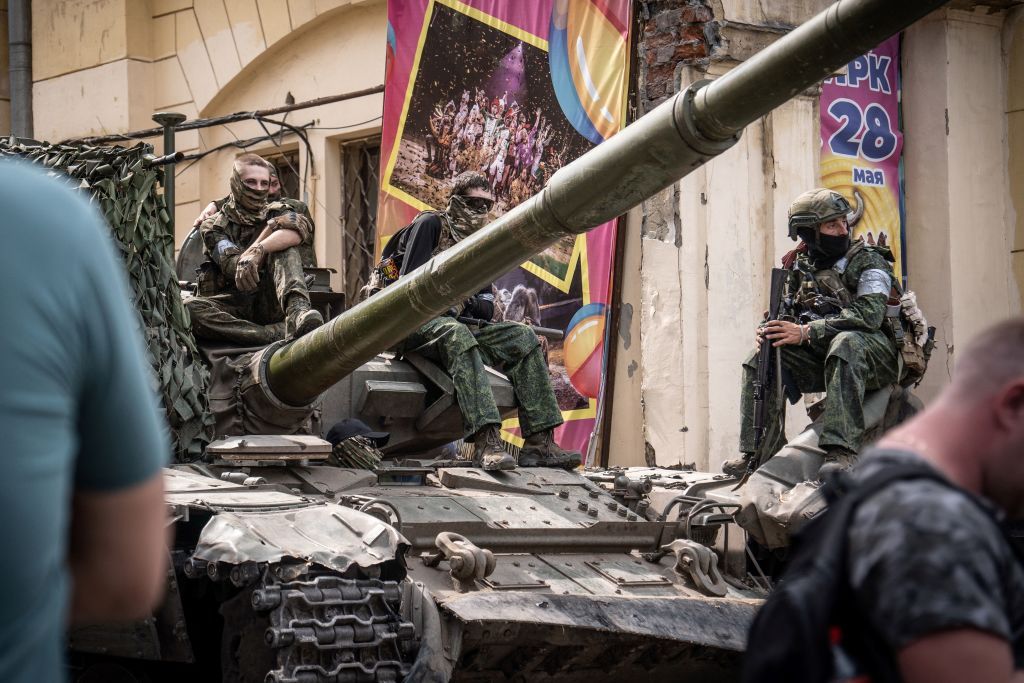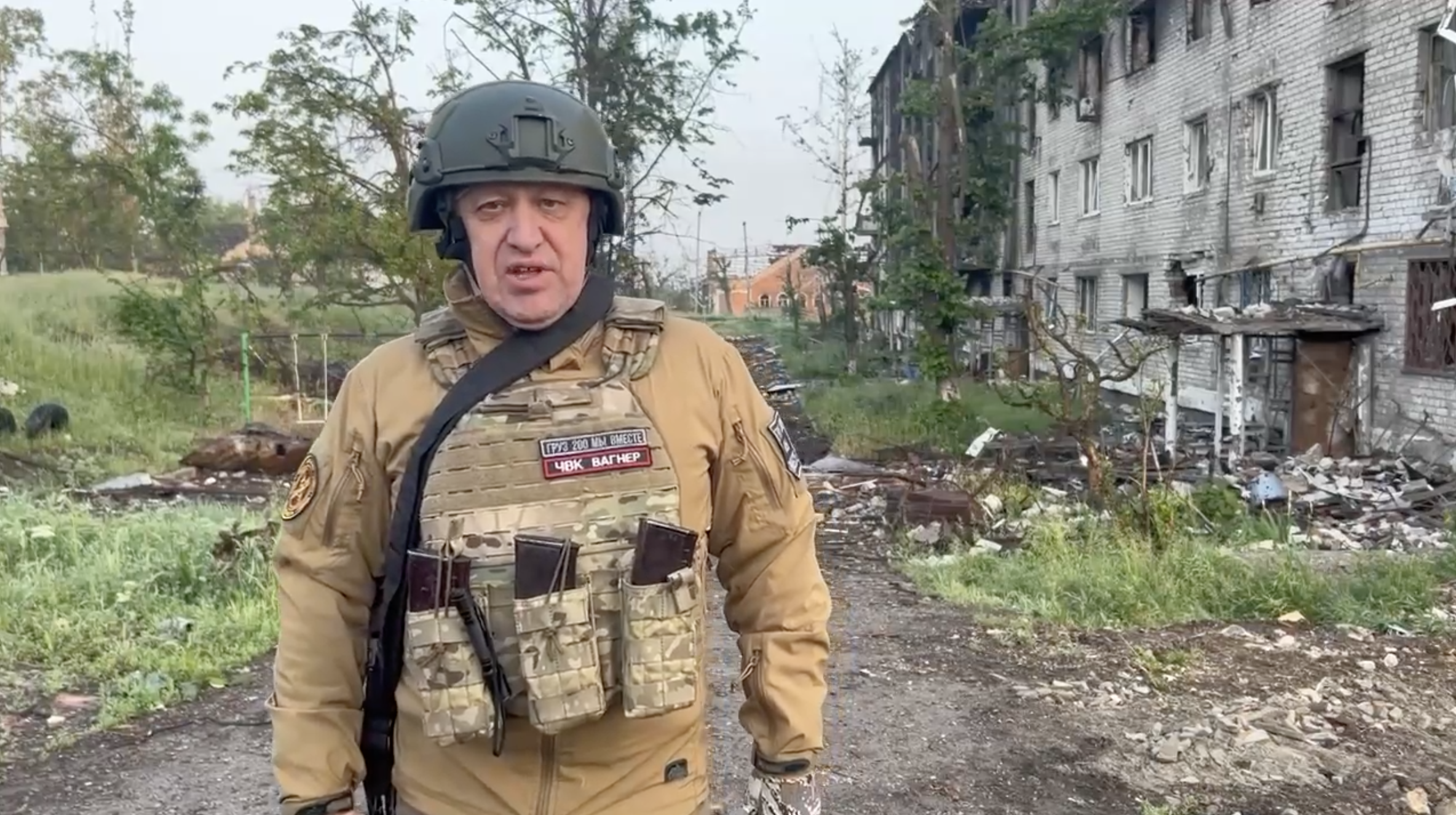Prigozhin says he started rebellion to protest Wagner dissolution, not topple government

The Wagner Group's founder Yevgeny Prigozhin published a statement through his press service on June 26, addressing the reasons for starting and abruptly ending his June 23-24 rebellion.
In his first public address since the uprising, Prigozhin said that the mercenary group had marched against Moscow to protest against its imminent dissolution and an alleged attack by the Russian army against Wagner troops.
"The purpose of our march was to prevent the liquidation of Wagner and punish those who made a gigantic number of mistakes during the special military operation (in Ukraine) due to their unprofessional actions," Prigozhin said in a veiled reference to the Russian military leadership, including Defense Minister Sergei Shoigu and General Staff chief Valery Gerasimov.
He said that Wagner had ended the rebellion to avoid further causalities on both sides.
Prigozhin said that, according to an order issued by Russia's Defense Ministry, the mercenary group was meant to be dissolved on July 1 and its staff and equipment would then be transferred to the regular army. However only 1-2% of the mercenaries agreed to sign the contract with the ministry, he said.
He claimed that Wagner had planned to peacefully transfer its military equipment to the Defense Ministry.
Prigozhin said that the transfer had been expected to take place in Rostov on June 30. However, the plan was foiled after the alleged attack on Wagner troops by Russia's regular army on June 23, he claimed.
Prigozhin again criticized the military's leadership as unprofessional and incompetent, claiming that Wagner represents the most capable force during the Russian invasion of Ukraine.
The trigger for the uprising was, according to Prigozhin, a missile strike and a helicopter attack against Wagner positions by the government's forces, resulting in around 30 dead mercenaries. So far, no solid proof has been presented that the alleged attack took place.

Prigozhin also said that, during his rebellion, several Wagner mercenaries had been injured. He added that two soldiers from the regular army who joined the Wagner insurrection had been killed.
The Wagner founder claimed that no Russian soldiers had been killed by Wagner troops "on the ground" during the rebellion. He nevertheless admitted the destruction of Russian military aircraft, adding it was in self-defense.
According to Ukraine's Air Force, Wagner shot down six Russian helicopters and one military plane.
Prigozhin justified the abrupt ending to his rebellion by two reasons.
Firstly, the Wagner leaders did not want to shed Russian blood, he claimed. Secondly, the mercenary group's aim was to protest against the group's dissolution, not to topple the government.
"We halted our advance when our assault troops reached a distance of 200 kilometers from Moscow, deployed artillery, and conducted reconnaissance of the terrain," Prigozhin said. "It became obvious that a lot of blood would be spilled at that moment. That's why we decided that our demonstration of what we intended to do was sufficient."
He also pointed out that the speed of the "March of Justice" demonstrated Russia's security weaknesses and Wagner's alleged competence, as the mercenaries marched a distance comparable to the one between the northeastern Russian-Ukrainian border and the city of Uzhgorod in the far west of Ukraine.
The rebellion was launched late on June 23. The mercenary group occupied Rostov, a major regional capital, and marched all the way to the town of Kashira in Moscow Oblast before unexpectedly ending the rebellion on June 24.
The event was preceded by a long-standing feud between Prigozhin and Russia's Defense Ministry. Prigozhin has repeatedly criticized the military authorities and claimed that Wagner mercenaries are the only Russian units achieving success on the battlefield.
On June 10, the ministry ordered all "volunteer" units (including mercenaries) to integrate into the regular army by July 1, triggering a backlash from Wagner.













